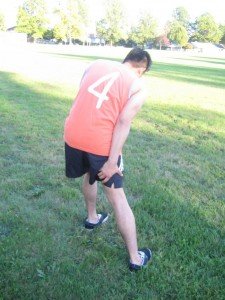Compartment syndrome is characterized by discomfort and swelling due to the accumulation of pressure within an enclosed space in the body known as a compartment. This issue is likely to occur most often in the thigh, calf and forearm.
What is the cause?
Groups of nerves, muscles and blood vessels are in enclosed areas in the arms, legs and other parts of the body. These are known as compartments and enclosed by a tough tissue called as fascia.
After sustaining injuries, fluid or blood might buildup within a compartment while the tissues inside the compartment become swollen. The fascia that surrounds the compartment does not stretch easily, thus fluid and the swelling increases the pressure within the compartment. The pressure can rise to high levels that it disrupts the blood flow and impairs the muscles, ligaments and nerves.

What are the signs?
The signs generally manifest in the thigh, forearm or calf such as:
- Pain that is intense than expected from an injury
- Weakness
- Swollen and taut skin
- Tenderness over the anterior part of the shin
- Aching sensation when flexing or pointing the big toe
- Numbness or tingling sensation of the foot, leg or hand
- Foot drop where the individual could not lift the toes
Management of compartment syndrome
Compartment syndrome that arises abruptly should be promptly treated. Surgery is necessary to relieve the pressure and restore the flow of blood to the site.
The discomfort caused by compartment syndrome due to exercise typically settles within a few weeks with self-care measures. Stretching and exercises are usually suggested to promote healing. In case rest and self-care measures are not effective in relieving the symptoms after 12 weeks, surgery might be suggested.
Measures to lessen the pain and swelling include:
- Application of ice on the site every 3-4 hours at 20 minutes at a time.
- The injured area must be propped on cushions or pillows while sitting or lying down.
- An anti-inflammatory medication can be taken as instructed.
Quick Note / Disclaimer
The material posted on this page on compartment syndrome is for learning and educational purposes only. To learn to recognize the signs and how it is managed, register for a first aid and CPR course with Saskatoon First Aid.
